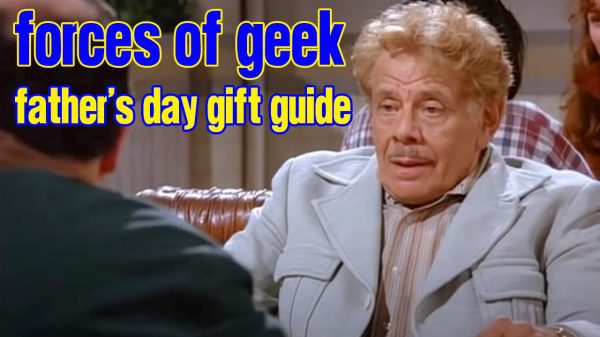I decided to postpone the topic I was going to write about for the column this week because of some very important news that was announced yesterday which must take precedence.
The Academy of Motion Picture Arts and Sciences has announced four recipients who will be receiving honorary Academy Awards in the coming ceremony, including Francis Ford Coppola, Eli Wallach, and most intriguingly, one of cinema’s true masters, Jean-Luc Godard.
However, the name on this list that has had the greatest impact on the preservation and awareness of our film heritage is Kevin Brownlow.
There has never been, to my mind, an individual more truly deserving of being honored by Hollywood, and indeed the American film industry, than Mr. Brownlow.
Kevin Brownlow is best known for his documentaries, many of which were produced in collaboration with David Gill, for Thames Television. His groundbreaking, 13-part series, “Hollywood”, provided a valuable service in recording for posterity the memories and experiences of the people who had contributed to the birth of the art of the motion picture.
The series looked at everything from the very beginning of the emerging film industry to the coming of sound.
The interviews, conducted with such people as Lillian Gish, Colleen Moore, Gloria Swanson, Louise Brooks, King Vidor, Allan Dwan, and many others who lived and worked in the silent period, convey a real, vibrant sense of what those years were like. It was a quality production all around, with good-quality clips presented with care, and an absolutely awe-inspiring music score by Carl Davis (who would go on to collaborate with Brownlow on future documentaries, as well as providing scores for the Thames Television silent film series).
This was my introduction to silent film.
I became intrigued beyond words by the powerful images, some of which are so haunting that I’m still overwhelmed by them now. The scene, from Griffith’s “An Unseen Enemy”, of Dorothy and Lillian Gish cornered in a locked room as a hand, holding a pistol, appears through a hole in the door; the scene of Lois Weber, also cornered in a room as an intruder breaks down the door; the confrontation between Gibson Gowland and Zasu Pitts in “Greed”, and the scene of Lillian Gish confessing a murder to Lars Hanson in “The Wind”, are all images and moments that will be forever in my mind.
His follow-up documentaries included the 1983 production, “Unknown Chaplin”, which presented Chaplin’s outtakes and rushes from his films in an attempt to understand how he arrived at the meticulously-rehearsed and perfectly-timed scenes that made their way into the final films; “Buster Keaton: A Hard Act to Follow” was an exhaustive study of the deadpan comic’s long and often complex career; and “Harold Lloyd: The Third Genius” helped introduce new viewers to the work of one of silent comedy’s supreme artists.
Next, Brownlow and Gill tackled the life and work of D.W. Griffith, in “D.W. Griffith: The Father of Film”, where they did a remarkable job examining the wide variety of films that Griffith created beyond his major masterworks like “The Birth of a Nation” and “Intolerance”. This documentary, which aired on PBS’ “American Masters” series, was followed with the massive, six-part “Cinema Europe: The Other Hollywood”, which examined major national film industries from Europe during the silent period.
After David Gill’s passing in 1997, Brownlow went on to continue to produce a number of other excellent documentaries, including “Universal Horror”, “Lon Chaney: A Thousand Faces” and “Cecil B. DeMille: American Epic”.
Brownlow’s commitment to film preservation is an inspiration to anyone who cares about the legacy of the cinema.
His most notable achievement in this field was the painstaking re-construction of Abel Gance’s 1927 masterpiece, “Napoleon”, a staggering technical achievement. Thankfully, Gance lived long enough to see the restoration work as well as the renewed praise for his film.
These are just some of the contributions Brownlow has made to the preservation of silent film, not just in the literal sense of saving and restoring so many films, but in the larger sense of creating an awareness of the history, and generating so much passion from new generations of historians, researchers and fans.
Brownlow’s emphasis on first-hand accounts in his research cannot be overemphasized.
His book, “The Parade’s Gone By”, provided many such accounts from the people he was writing about, an approach he used with his “Hollywood” series a decade later. In doing so, Brownlow allowed his subjects to really speak for themselves, to tell their own stories. Following the broadcast of “Hollywood”, Brownlow wrote the companion book, “Hollywood: The Pioneers”, which offered an informative account of the era as well as a number of excellent stills from the films he wrote about.
Like the best historians, Brownlow’s passion for films comes through loud and clear in his work, and has inspired countless people to pursue studying film. Brownlow has always treated silent film with respect, restoring films to their original glory with thoughtful musical scores that enhance the viewing experience.
Because of his demonstrated commitment to preserving Hollywood’s own cinematic heritage, I can think of no one more deserving of being recognized by the Academy than Kevin Brownlow.











































































































2 Comments
You must be logged in to post a comment Login